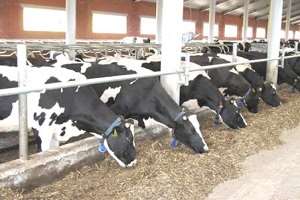In preparation for the reauthorization of the next farm bill, the House Committee on Agriculture convened today to hear from a panel of economists testifying on the economic challenges currently facing rural America. Committee Chairman Michael Conaway noted in his opening remarks that net farm income, in the wake of the collapse of commodity prices, has fallen 45 percent from 2013 to 2016 in the largest 3-year percentage drop since the Great Depression. Dr. Scott Brown, University of Missouri assistant extension professor, spoke before the committee this morning, describing the current economic outlook for America’s dairy and livestock producers.

According to Brown, the lower cattle, milk and hog prices that caused financial stress on producers in 2016 will likely continue into 2017. Already at 50 percent below their 2015 value, Brown projects feeder cattle prices will continue to fall this year, leaving only dairy farmers with any positive outlooks.
“At this point, the only livestock industry anticipating higher prices is the dairy industry as tighter global markets suggest milk prices can move higher from recent lows,” Brown testified.
Milk prices fell from $24 per cwt in 2014 to $16 in 2016, Brown says citing the failure of the 2014 Dairy Margin Protection Program to have worked as planned. He reports there is growing concern for the 2018 farm bill to provide a viable alternative to the dairy safety net program contained in the 2014 farm bill, while also taking into account the volatility of cash receipts in the dairy industry.
“Identifying a safety net program for dairy producers that can moderate the billions of dollar change in dairy cash receipts that have occurred in the last few years and yet only show an average cost of $79 million to the federal government is a large challenge,” he said. “It is important to remember that dairy farmers will always remain in a better financial situation when market conditions result in little to no government spending, as a safety net program hardly ever completely offsets lower market returns.”